Ode to Joy: In conversation with Nick Andrews Since his first exhibition at the Black Panther in March 1997, Nick Andrews has been a constant force in the contemporary Antwerp gallery. His recent exhibition ‘Ode to Joy’ is the twelfth in line. He graduated from the Academy of Fine Arts in Antwerp in 1996. His work is characterized by his use of contrasting primary colors and flamboyant brushstrokes. This results in a pattern of light and shadows and a contrast between warm and cold colors. Nick draws inspiration from multiple fascinations such as film, theater, literature and philosophy.
“Ode To Joy” is an ode to color, to art and to togetherness. It is like life itself…”
Jeroen Olyslaeghers

March 2021 – In the lime of a pandemic rampant outdoors, Private Art Tours sat down with Nick who was in full preparation for his exhibition Ode To Joy. Works under construction were hanging on the walls of his studio, compositions and color studies were scattered across his desk. We were given the honor of literally walking into Nick Andrews’ process of creation and contemplation and dug into the past of his life as an artist with great appreciation.
PAT: How did your relationship develop over time with Adriaan Raemdonck and Fred Bervoets?
Nick: “Adriaan was a member of the final jury during my studies in painting, I graduated in ’96. We were sort of the ‘Fred Bervoets’ class. I first intended to go to the Royal Institute for Theatre, Cinema and Sound (RITCS) in Brussels to do something more in the field of video, but in the end I decided to pursue painting. Before summer, I was invited by a teacher of Painting from the Academy of Fine Arts in Antwerp. He saw a certain aptitude in my gouache designs, so I was invited to come and paint. I went to museums a lot, but Rubens and other old masters put me somewhat off. After the summer break, I went to the RITCS anyway….. The first day at the introduction of the film school I wasn’t too keen. My mother saw that I wasn’t enthusiastic after all: in the end I took the entrance exam for Painting.’
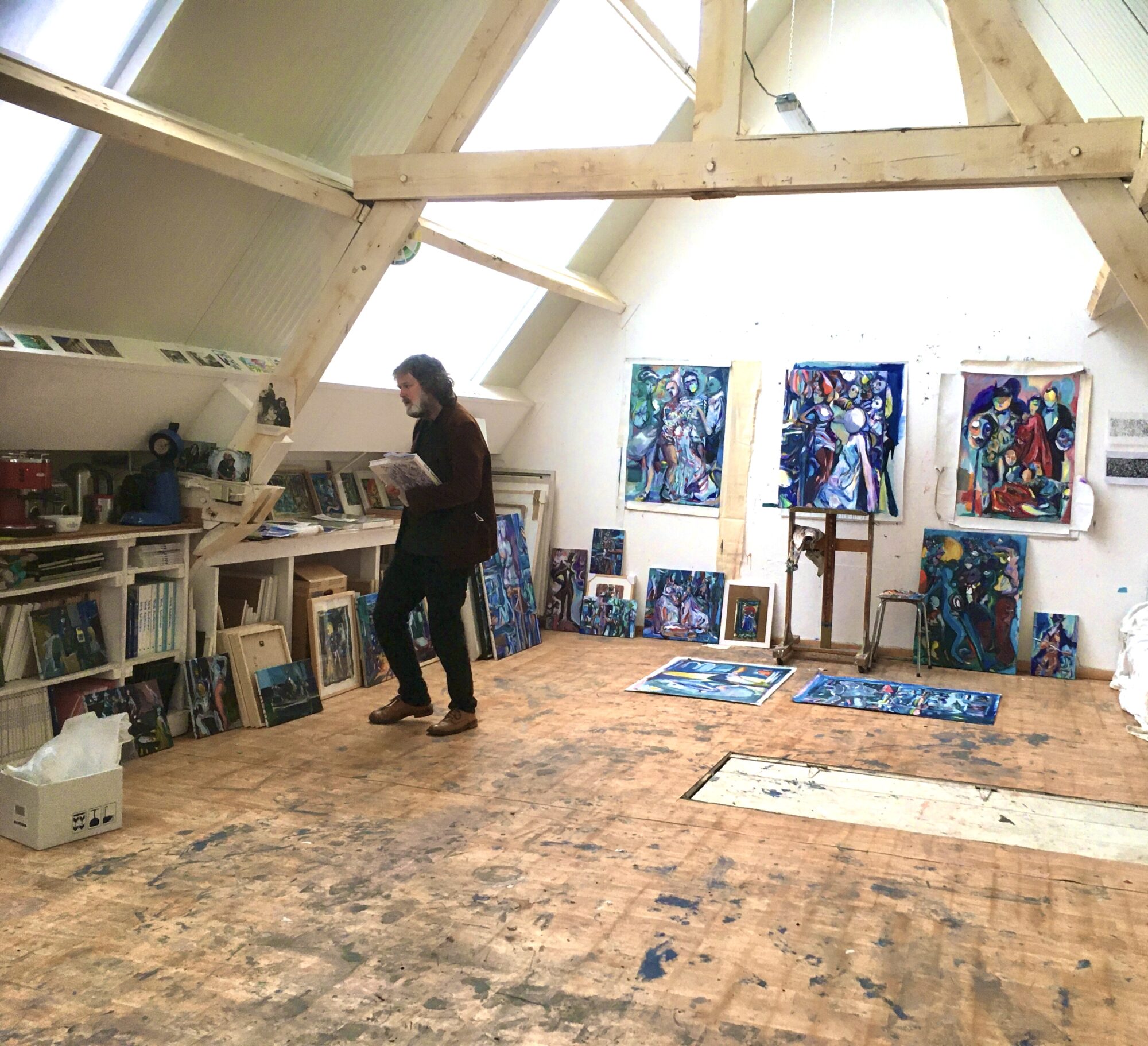
‘Two weeks after the entrance exam it was the first day of school with the selection group of the exam. All teachers were introduced and the last teacher was Fred Bervoets. We were a very close group and were very international. But still many people dropped out in the first year. Fred was interested in our mindset and works. He would regularly come around and say statements like ‘Nick don’t touch it’. You could see that he knew a lot about technique, he was very visual in his reading. He told us to work together as a group. Eventually we had rented a studio close to the Cogel Osyslei with eight people. We would have meetings by ourselves on Tuesdays. We started in October and since there were eight of us we called ourselves October Octopus. This is what led, 20 years later, to the exhibition “Dive Boat” in the long hall at the Academy of Fine Arts in Antwerp, coordinated by Sergio Servellon. ‘De Fred’ could speak very theatrically and had a poetic way of expressing himself; ‘I am your captain, we are going to sea, we are going under the ice!’ He passed this statement along to his students.’
‘During the time at the academy, you had a lot of these engagements and collaborations. Sergio Servellon sought out all these artist collectives that emerged from Fred Bervoets’ classes. We were the first one called October Octopus. Then you had Placenta with Nadia Naveau, Tom Liekens, Caroline Coolen and Bart van Dijck.’
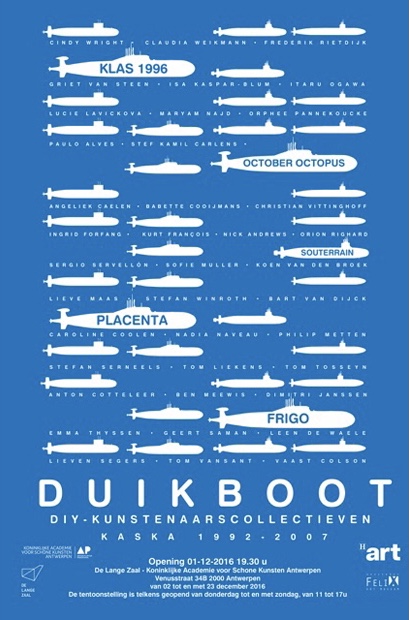
PAT: Besides being colleagues, are you all friends?
Nick: ‘Before art, I used to do sports. There was a great deal of competitiveness there. In the art world there is also a lot of competition but I relate the competitiveness to my plastic dialogue in studio. Competitiveness in the art world is a part of a greater deal. But that part is different: it depends on how someone interprets it. In art, it’s completely different from sports. It’s a very strange phenomenon, you learn a lot from your works, you become a better person through something that is abstract or almost impossible to define.’
‘Anything can be art, but at some point there is something that has to be veneered, that can only happen through experience. ‘ Nick Andrews
Nick Andrews
PAT: Can you comment from each other’s work that is a strong piece? And why it is a strong one?
Nick: `Well yes, that’s mostly experience. My eyes are trained now, also through technique. When I was little my family came to Antwerp from England. We used to go to the Royal Museum of Fine Arts in Antwerp and I can always remember being frightened by Rubens. I enjoy it so much now that I can actually read Rubens. And also know how he constructed it, that he can create an incredible work with all the details in 6 weeks.
Once upon a time in the Royal Museum of Fine Arts in Antwerp there was a display rack where you could have a closer look at Rubens. You then saw that finesse and planning that Rubens did in 5 steps. By seeing plenty, you can learn from others, feel and see.
Anything can be art, but at some point something has to be veneered, that can only be done through experience.’
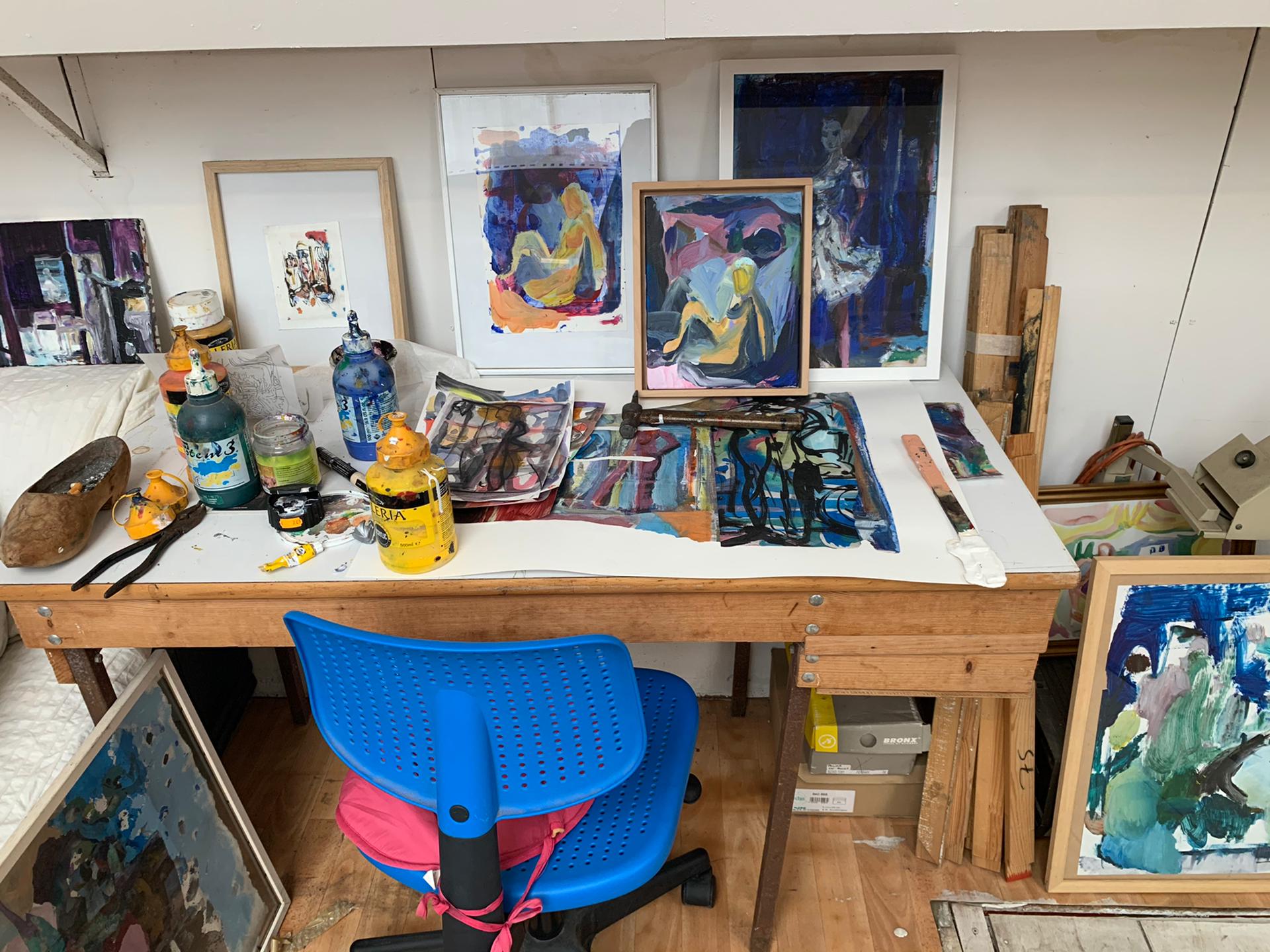
PAT: Have you ever reflected on a path that you haven’t thought about?
Nick: ‘A lot of people do the same thing all the time, but that’s their pattern. When I discover something, I don’t immediately know if it’s the right direction. But a good work always emerges.
That’s why I work in series. Also towards the exhibition. I have been working with Adriaan for a long time. He is a very open person, and I have always found the social aspect of his gallery interesting. The painters in his gallery appealed to me: it wasn’t a ’90s white space.’ Adriaan was always committed to your process: ‘You’re the maker, I’m the gallery owner, I can help you’. He made us do it until I got there. You had to work towards the exhibition. So I started working with series. I used to be a little more vital, then paintings tend to come faster sometimes because you are trying things out and testing stuff. Around your mid-40s you get a pattern, a way of working. A kind of handwriting, with me it’s about the three main colors, the organic, with a geometric design. I am expressive but coordinated. I read in relation to the material. I recognize that in the artists who have been working within the gallery. Painters working in the gallery were bold enough to speak out. Expressive works appealed to me. For the past 13 years I always had an exhibition in The Black Panther every two years. That was always around September at the opening of the season.
“I believe in the process and also in what the paint can do. I like to be surprised. Experimenting with different techniques and being amazed by them is what I like to do.” Nick Andrews
Nick Andrews
PAT: Your spouse is sculptor Nadia Naveau. Do you occasionally work together in the studio?
Nick: “Yes in her workshop we actually do. We also have a home and studio in Auvergne, France. This place is very essential to us. Sculptors work very plastic. Once it starts to take shape, then a different kind of process begins. Like an architect has to operate. Then comes the ‘gravity’, a certain technicity. But still I am happy to be a painter and to only have to think about, for example, elongating. Yet I feel the need to work around the artwork. I work with other techniques to give myself new energy. Lithography, etching, ceramics, carpet design…. Then I can return to painting. I revisit a series I was working on by linking it to literature and other certain fascinations such as philosophical aspects.
I have now also created a particular edition of porcelain works, of which only 25 were completed. Again, I have been painting with the three principal colors with an underglaze, so that you don’t immediately see what you are doing. You only see traces, but you don’t see the result. Our society is result-oriented with a big focus on deadlines. I believe in the process and also in what the paint can do I enjoy getting surprised. Experimenting with different techniques and being amazed by them is what I love to do.’
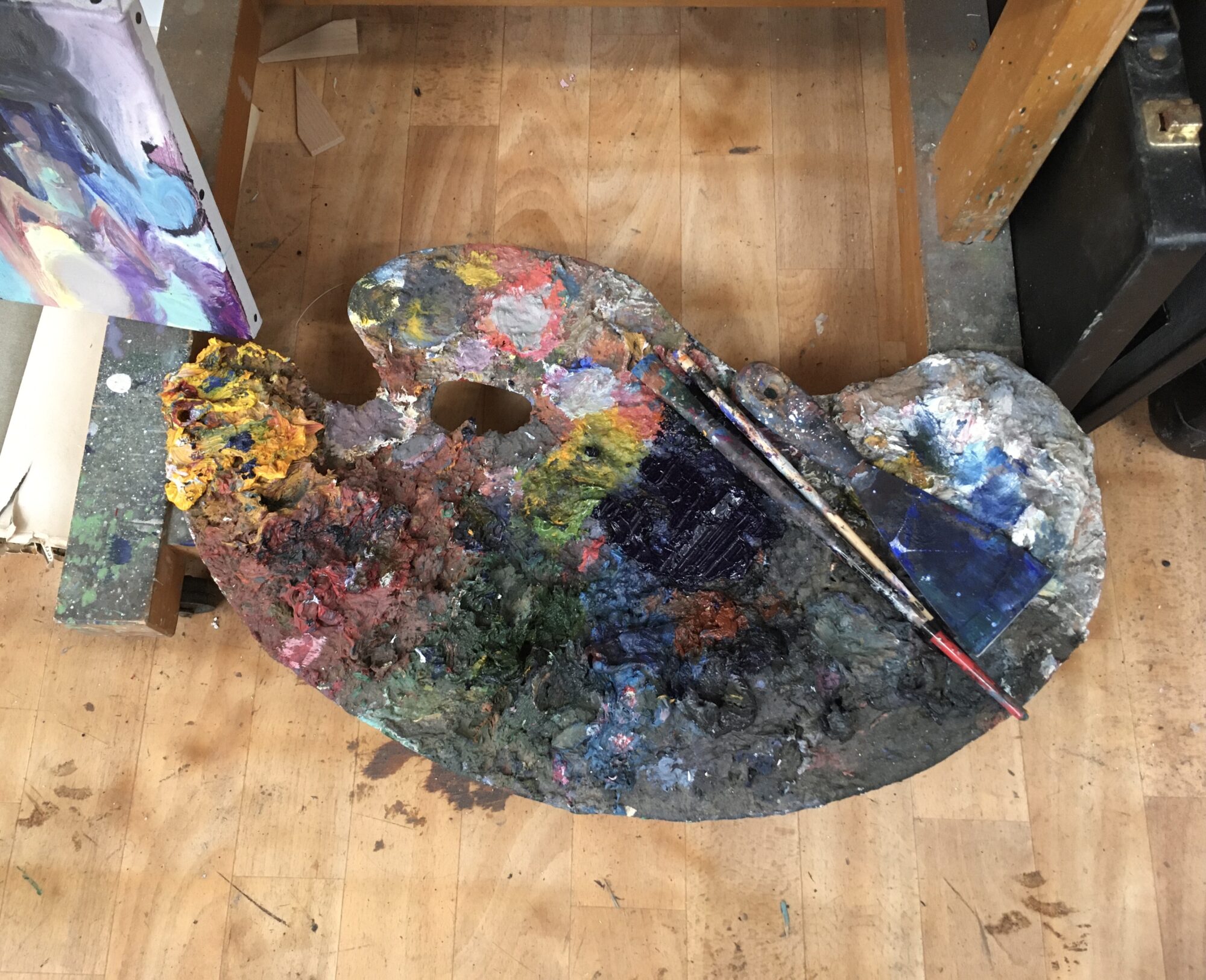
PAT: Your paintings have a very cinematic feel to them, can you elaborate on that a bit?
Nick: ‘I’ve always been fascinated by films and I always wanted to be a director. There’s an assignment I give to my students where we do scenography. What makes a painting autonomous, what is the difference between photography and film? How can you as a painter manipulate the viewer, by putting elements in the space. Some works of the old masters like Jan Van Eyck, Johannes Vermeer seem cinematic in which you are sucked in. In the beginning I have an idea that is abstract: it’s elements that start to emerge. Then it all comes together and becomes a scene.’
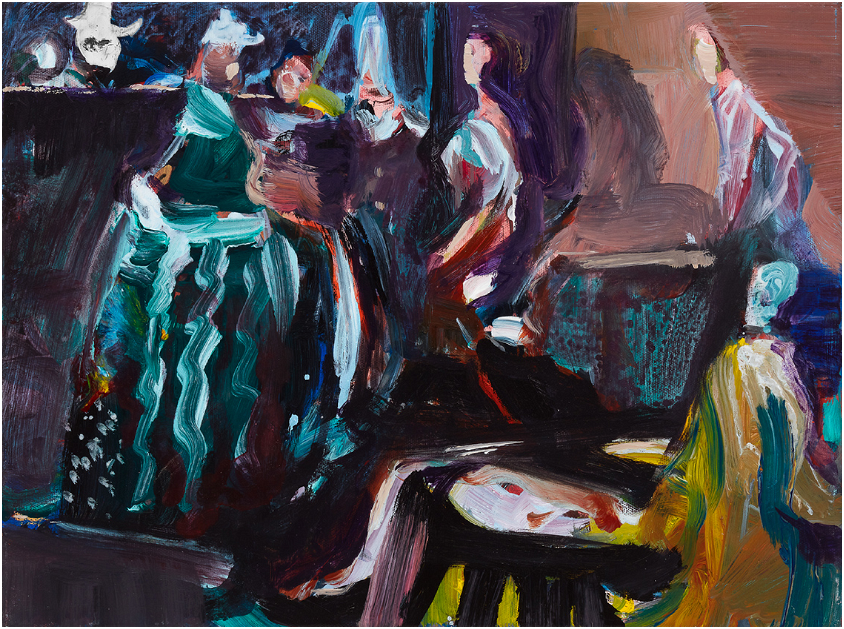
The exhibition ‘Ode To Joy’ runs until Sunday, November 7, 2021.
Galerie De Zwarte Panter | Hoogstraat 70-72-74 | Antwerpen | België
Thursday, Friday, Saturday, Sunday 1:30 p.m. to 6 p.m.